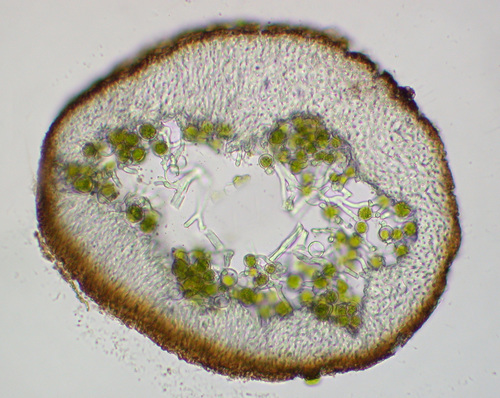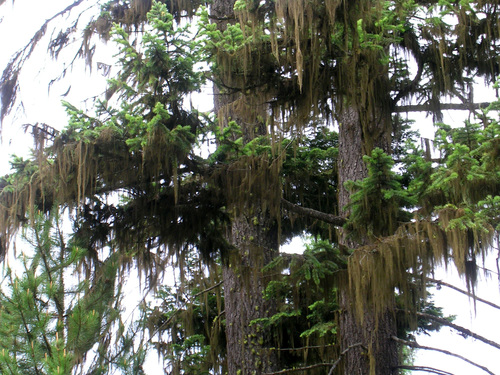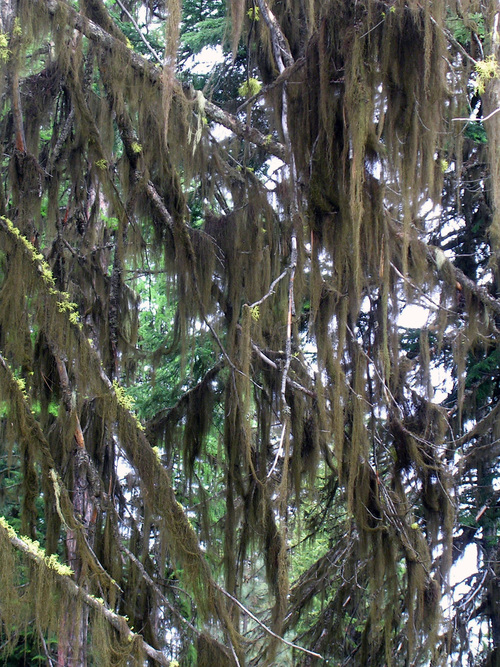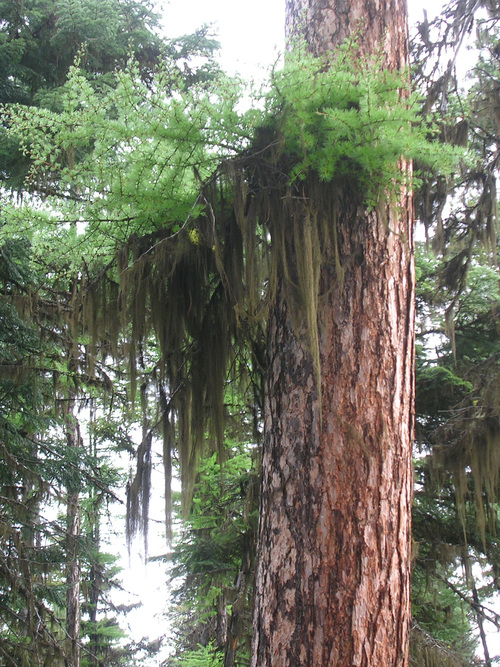Click on Characteristic name for explanation. Click on image for larger version.
|
Bryoria fremontii
| Overview
| | PNW Range: | | | West side | Uncommon
| | East side | Abundant
| | Immediate coast | None
| | Alpine or subalpine | Uncommon
| | Habitat: | Achieves greatest biomass in dry, open Pinus and Pseudotsuga forests and savannas, often forming long thick beards, but occurring in small to moderate amounts in open and semi-open habitats to near timberline. Also in the treetops in mesic low-elevation forests.
| | Substrate: | On bark or wood, mainly on conifers, occasionally on hardwoods.
| | Comments: |
| | Synonymy: | Bryoria tortuosa
|
|

Branch cross section
by B. McCune
2/9

Field appearance
by B. McCune
4/9

Field appearance
by B. McCune
7/9

Field appearance
by B. McCune
8/9
Scale: Bar=1mm unless noted
|
|
|
|
|